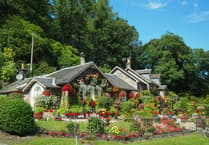WHO hasn’t stood on a bridge to watch trains go by?
The pictures here span nearly 100 years and were all taken from the footbridge that links St John’s Lye with Hook Heath, looking towards Woking and London.
Picture 1 was emailed to me by Jonathan Foster. He said: “In a minor clear out recently, the attached photo came to light. It was taken by my father and he wrote on the back ‘Near Woking, 11 August 1923’..
“I think he used a Kodak VPK camera or similar, so it’s only tiny (two and a half inches by one and a quarter inches), but it’s reasonable quality. Maybe the location could be a puzzle for readers of your column?”
However, it didn’t take long to work out the location using the website Google Earth and with help from my good friend and retired railwayman Geoff Burch of Worplesdon.
The footbridge is reached on the north side of the railway line by a track that leads from St John’s Lye to a row of houses beside the line. On the south side, a path leads to Pond Road at Hook Heath next to Woking Golf Club.
The steam engine in Picture 1 is a T9, a class of loco designed by Dugald Drummond for express passenger trains for the London & South Western Railway. Nicknamed Greyhounds, they could reach a top speed of 85 miles per hour. The white discs – the head code – on the front of the engine denotes its destination was Lymington in Hampshire.
A preserved T9 is owned by the National Railway Museum. The loco is in working condition and currently on loan to the Swanage Railway.
In Picture 2, a man and a woman can be seen in front of the cottages on the left watching the Bournemouth Belle express pass by with a rake of Pullman carriages.
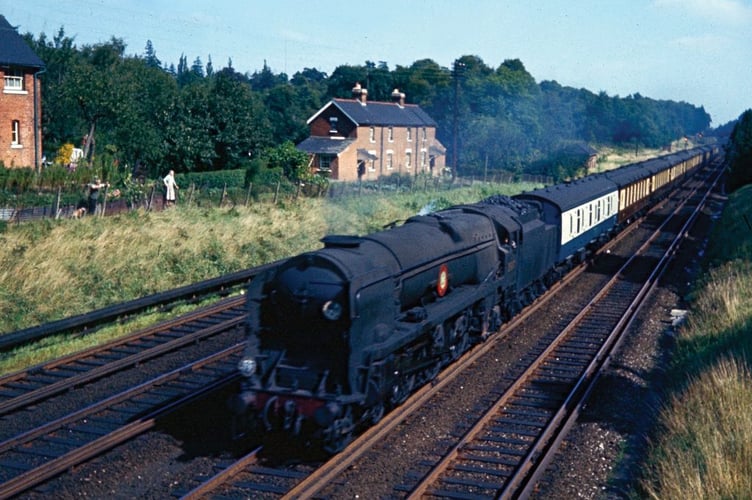
The Belle departed London Waterloo station daily at 10.30am, returning at 7.18pm. The service was introduced in 1931 and withdrawn in July 1967.
The locomotive in this picture is Merchant Navy Class, No. 35012, United States Line, looking rather grimy, as many steam engines did at this time, not long before they were withdrawn from service. The date is 9 September 1966. The train was scrapped at Cashmore’s yard, Newport, South Wales, the following year.
However, a number of these locos, designed by Oliver Bulleid for the Southern Railway, have been preserved. For example, No. 35028, Clan Line, can often be seen on the main line in these parts hauling chartered excursions.
Picture 3 – taken on the same day as the previous photo – shows what’s often said to be the world’s most famous locomotive, the Flying Scotsman.
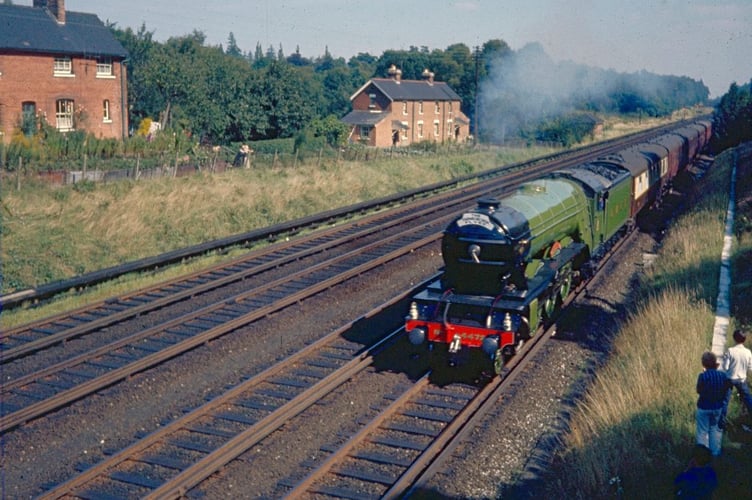
Built for the London & North Eastern Railway and entering service in 1923, this A3 Class Pacific express passenger loco’s history is well known. At the time of the photo, it was owned by entrepreneur Alan Pegler, who bought it from British Railways in 1963.
Here, it was taking passengers to the Farnborough Air Show and was chartered by The Gainsborough Model Railway Society of Doncaster. The headboard on the front reads “The Farnborough Flyer”.
The introduction of diesel locomotives to Britain’s railways meant that many drivers of steam engines had to be retrained. Picture 4 shows a Brush Type 4, D1921, on a crew training trip on the same day as the previous two photos.
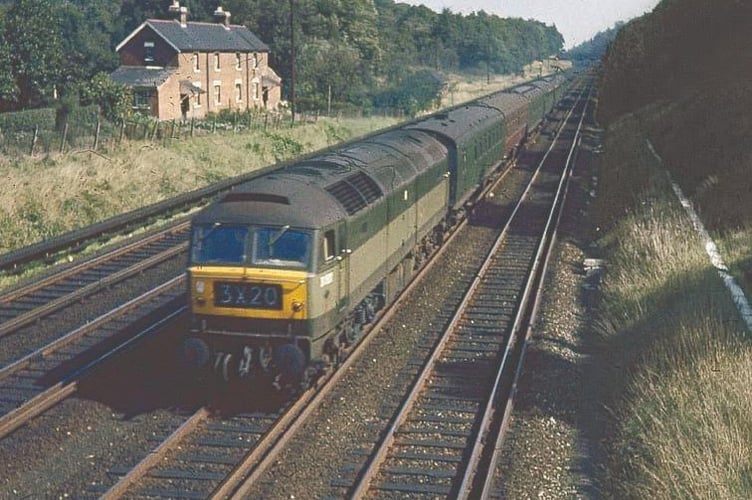
This loco was technically diesel-electric. It was later renamed Class 47. From 1962-68, 512 were built by Brush Tractions at its works in Loughborough and by British Railways at Crewe. Some are still in service today on the UK’s public and heritage railways.
Pictures 2, 3 and 4 are from the collection of railway enthusiast Bob Hind, who once lived at Send.
For train spotters in the 1960s who stood at the end of station platforms, on over bridges and along the line side, it was a sad sight witnessing the last of our steam trains. In Picture 5 are two British Railways Standard Class tank engines on their way to being scrapped. The photo was taken on what is believed to be the final day of steam on the Southern Region, Sunday 9 July 1967.
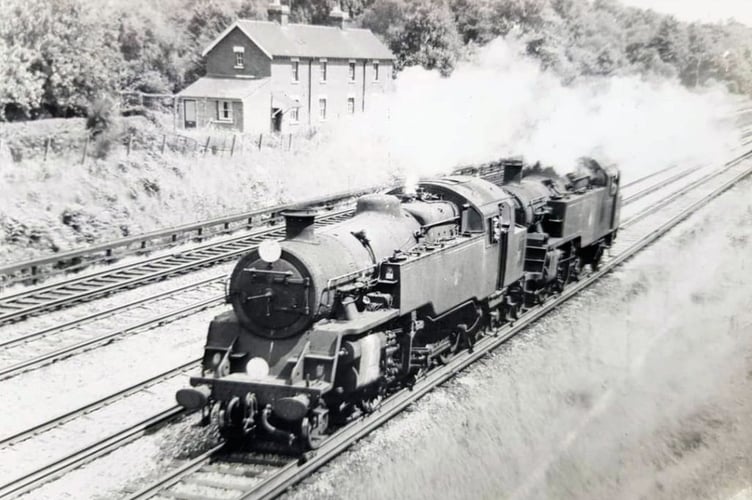
It is known that on that day, three tank engines departed Nine Elms motive power depot in London under their own steam. They were Nos. 80152 – possibly the lead engine seen here – with either 82019 or 82029 behind. Their destination was Salisbury where they would have been stored before being towed to South Wales to be broken up at one of several scrap yards.
Woodham’s, at Barry Dock, is the most famous of the scrapyards. Of nearly 300 steam engines that went there, just over 200 were bought by preservationists with the aim of restoring them to working condition. Put simply, it’s the reason why so many fine locos can be seen today on our heritage railways and on the main line.
Picture 6 shows the scene today, as viewed from the footbridge. You may spot a signal box on the up side in some of the earlier photos. It is not there now; a signal gantry spans the two down lines. The inside up and down lines serve the same function today as in the earlier photos – allowing fast through trains, travelling up to 100mph, to pass slow trains.
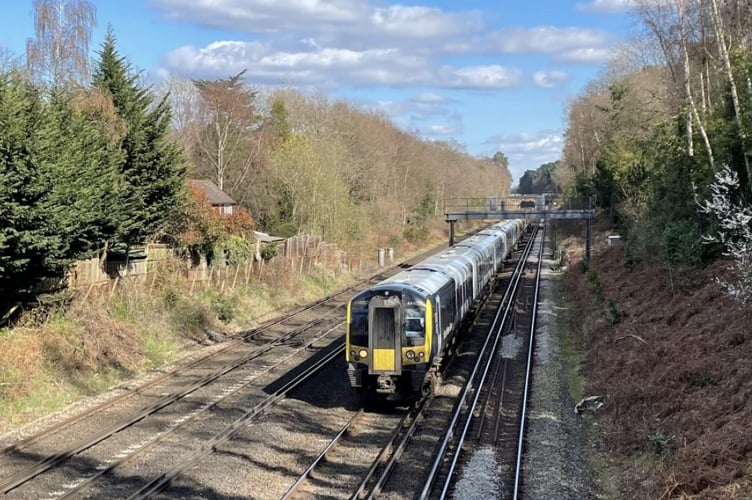
Geoff Burch took Picture 6, via his smartphone which he pointed through a small gap in the tall steel mesh that is now attached to bridge for safety reasons.
The electric train, in the livery of South Western Railway, is on the Waterloo to Bournemouth service. The front portion being a Class 444 Desiro, No. 444037, built by Siemens.
If you have some memories or old pictures relating to the Woking area, call me, David Rose, on 01483 838960, or drop a line to the News & Mail.
David Rose is a local historian and writer who specialises in what he calls “the history within living memory” of people, places and events in the west Surrey area covering towns such as Woking and Guildford. He collects old photos and memorabilia relating to the area and the subject, and regularly gives illustrated local history talks to groups and societies. For enquiries and bookings please phone or email him at: davidrosemedia@gmail.com

